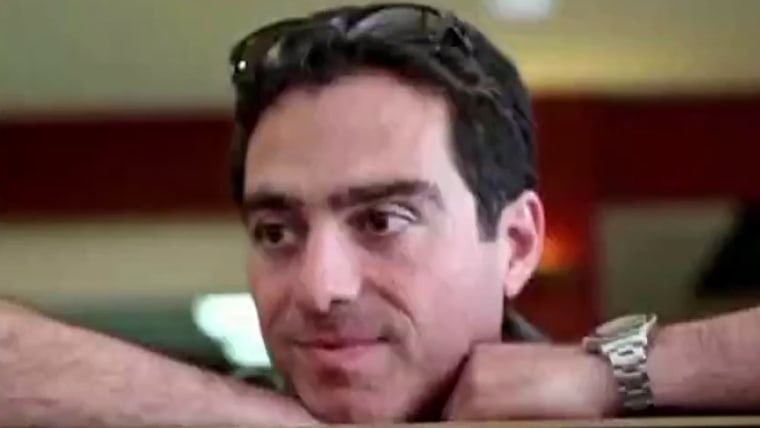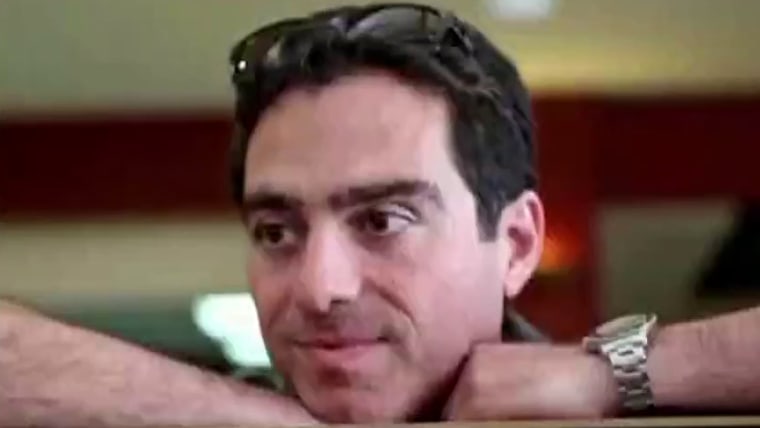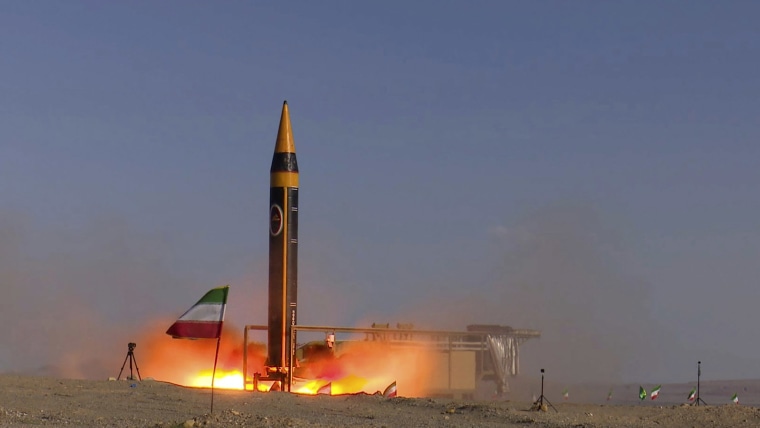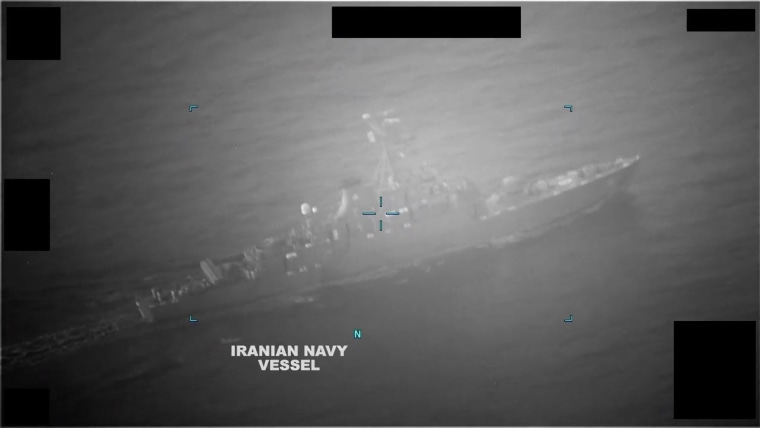There are growing indications that both Iran and the United States have taken steps to dial back tensions in recent weeks and months, though the de-escalation remains tentative and could easily collapse.
Western officials and regional analysts point to Iran’s slightly slower pace of uranium enrichment work, a decline in attacks by Iranian-backed groups on U.S. forces in Iraq and Syria, an increase in Iran’s oil exports and a prisoner exchange agreement that appears close to completion as signs of a step back from confrontation.
“There does appear to be some limited, tentative de-escalation, but there are many ways this could all go sideways, and it’s not clear where this will ultimately lead even if it holds,” said Eric Brewer, deputy vice president at Nuclear Threat Initiative, a think tank, and a former U.S. intelligence official who worked on nuclear nonproliferation.
The relative thaw, however limited and fragile, appears to be the result of an understanding between the two governments designed to avoid a crisis in the coming months, while keeping the door open to possible negotiations over Iran’s nuclear program, two sources familiar with the matter said. For the White House, such an arrangement buys time and averts a potential confrontation during the 2024 presidential election campaign. For Tehran, it offers a respite from more sweeping sanctions and a chance to concentrate on its domestic troubles, experts and former U.S. officials said.
U.S. officials have repeatedly insisted that there is no “deal” between the two governments. Any formal agreement would trigger a U.S. law that requires Congress to approve any new accord with Iran. NBC News and other media previously reported on indirect talks aimed at avoiding a potential conflict.
One sign of the lowered temperature between the two adversaries is a drop-off in attacks on U.S. forces by Iranian-backed militia in Iraq and Syria, which had prompted the Biden administration to carry out airstrikes in the past.
“They have slowed down a lot,” said Michael Knights, an analyst with the Washington Institute for Near East Policy, who closely tracks the Iranian-backed militias. “They’re not directly confronting us very often these days.”
Maj. Gen. Matthew McFarlane, who at the time was overseeing U.S.-led forces in Iraq and Syria, told reporters last month that there had been no attacks by Iranian-backed militias on U.S. bases in Syria for 110 days and no attack on coalition bases in Iraq for 14 months.
On Iran’s nuclear program, Tehran has chosen to slightly decelerate its enrichment work, though its stockpile of nuclear fissile material continues to expand.
According to two sources familiar with a report from the International Atomic Energy Agency, Iran has slowed down the rate at which it is enriching uranium to 60% purity, only a step away from the 90% grade needed to build nuclear weapons. The move serves as a political signal but does not represent any progress toward limiting Iran’s potential for building an atomic bomb, Brewer and others said.
Iran now has enough near-weapons-grade uranium to build roughly three nuclear weapons, and a stockpile of uranium enriched at 20% to develop even more, experts said.
“It doesn’t change things from a nuclear risk point of view,” said Henry Rome, also from the Washington Institute. Iran is “very comfortable and adept at turning down the dials in some ways and turning them up in other ways to achieve a political end while the overall trajectory of the program is still undiminished,” he said.
Although U.S. sanctions continue to inflict economic pain on Iran, Tehran’s oil exports have steadily increased this year, rising to an estimated 1.85 million barrels a day in August. The oil revenue, mainly the result of exports to China and other customers in Asia, is helping keep Iran’s economy afloat. Critics in Washington have accused the Biden administration of easing its enforcement of oil sanctions to lower tensions with Iran. In public comments, U.S. officials have denied any relaxation of sanctions enforcement.
A single incident in the narrow Strait of Hormuz, a crucial artery for global trade and oil shipments, could trigger another crisis with Iran and end any prospect of a limited scaling back of tensions.
It remains unclear if Washington and Tehran have made any firm commitments about the security of oil shipments in the Persian Gulf, including whether U.S. authorities will continue to order the seizure of tankers allegedly carrying smuggled Iranian oil. Previous U.S. seizures have triggered retaliation, with Iran capturing or harassing tankers in the Persian Gulf in response.
“The maritime dimension doesn’t seem to be included in this understanding,” said Ali Vaez of the International Crisis Group, a think tank. “That’s a point of tension that could bring down this entire de-escalatory understanding.”
Court documents unsealed Thursday showed that U.S. authorities this year confiscated nearly 1 million barrels of Iranian oil allegedly bound for China aboard the Suez Rajan, a Marshall Islands-flagged tanker. U.S. authorities threatened to prosecute a Greek shipping company to force the tanker to head to a U.S. port, where the oil could be offloaded. The company, Empire Navigation, pleaded guilty to smuggling Iranian oil in violation of U.S. sanctions and agreed to pay a $2.4 million fine, according to the unsealed court documents.
In apparent retaliation for the U.S. move, Iran seized two oil tankers near the Strait of Hormuz in the spring, including one vessel in April carrying cargo for U.S. oil giant Chevron Corp. The Iranian seizures have prompted the U.S. military to expand its presence in the Persian Gulf to safeguard commercial shipping, deploying additional naval patrols and warships.
There have been no reported confrontations in the Strait of Hormuz since July, when Iran tried to seize two oil tankers but pulled back after an American guided missile destroyer arrived at the scene, according to the U.S. Navy.
Meanwhile, U.S. officials hope a prisoner swap agreement with Iran will be wrapped up within days, securing the release of five American citizens and possibly opening the way for more diplomacy with Iran.
Under the deal, the five Americans held in Iran will be freed in exchange for five Iranians detained in the U.S., and Tehran will gain access to about $6 billion in oil revenues that have been blocked in South Korean banks. The five American prisoners have been placed under house arrest as a first step in the exchange, while the funds in South Korea are being converted to different currencies and transferred to Qatar’s central bank. The funds are only allowed to be used for the purchase of food, medicine or other humanitarian purposes permitted by U.S. sanctions.
The prisoner exchange, and the apparent de-escalation between the two countries, could allow for a renewal of nuclear talks between Iran and world powers, possibly as soon as this month or in October, experts said. Neither Tehran nor Washington are prepared to enter into substantial negotiations with the U.S. presidential election looming in November 2024, but the two sides just might be able to discuss the potential contours of a future deal, Vaez and other experts said.
Efforts to revive a 2015 nuclear deal, known as the Joint Comprehensive Plan of Action (JCPOA), collapsed last year after months of negotiations. The agreement eased sanctions on Iran in return for strict limits on its nuclear program designed to prevent Tehran from developing nuclear weapons. Then-President Donald Trump withdrew the U.S. from the deal in 2018, both reimposing sanctions and introducing additional sanctions on Tehran.
Iran’s recent slowdown in its enrichment work is a relatively positive step, but in any future discussions, the Biden administration needs to push for more monitoring and inspections by the U.N. atomic energy agency to ensure the outside world has a clear picture of Tehran’s nuclear activities, arms control experts said.
“I think the Biden administration has to focus on enhanced monitoring, and additional access. That would provide greater assurance that Iran isn’t diverting materials, like centrifuges to a covert facility,” said Kelsey Davenport, director of nonproliferation at the Arms Control Association think tank.
Iran has yet to provide the IAEA with access to recordings from video cameras at some nuclear sites and has not allowed U.N. inspectors to visit some sites in its nuclear program, including a new site used to manufacture centrifuges.
Iran says its nuclear project is for purely peaceful, civilian purposes and not aimed at building nuclear weapons.
Iran’s U.N. mission did not immediately respond to a request for comment.
Source: | This article originally belongs to Nbcnews.com













